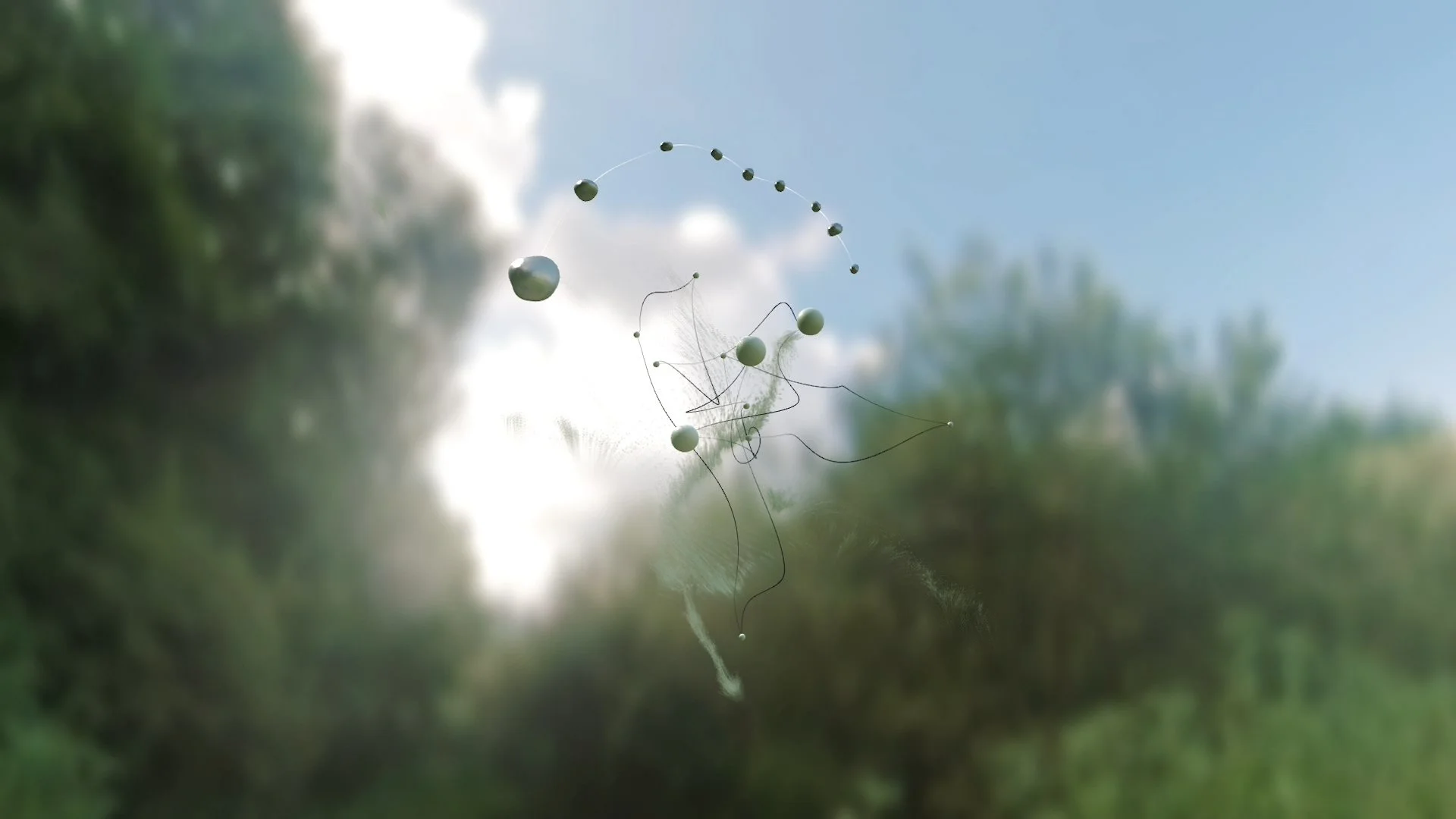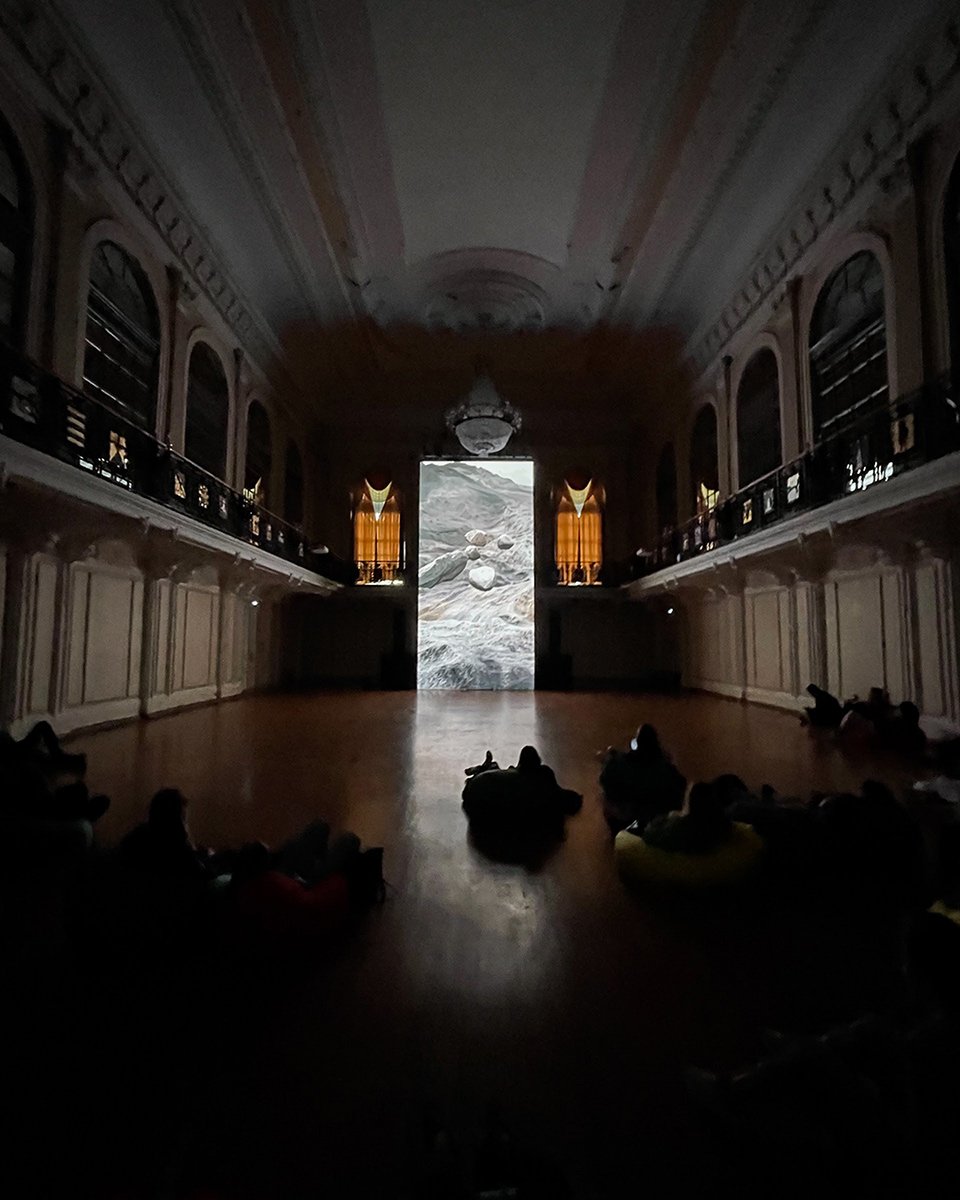kohui
While contemporary society drowns in data, Kohui immersive and contemplative AV works slow down the bulimic consumption of information and lead the audience to interface with a synaesthetic dimension with its own altered temporality, a transitory comma in a frenetic pause-less discourse.
Kohui is an audiovisual artist based in Seoul, working with 3d and generative softwares to create virtual landscapes through algorithmic processes inspired by natural phenomena. Reflecting on the connection between sound, space and people, Kohui explore immersive sonic geometries and the multifaceted possibilities of sensing and visualize sound.
Through installations, environments, performances, generative visual art, Kohui often collaborates with other musicians and artists, bringing its imagery on different stages and channels and blurring the line between physical and virtual spaces. He also participated to several international festivals like MUTEK Montreal (2021), SeoulLight: Part 2 - Skin (2021), ACT Festival (2019), WeSA Festival (2019/2016), ATM - Order & Disorder (2018).
In this interview, Kohui talks about the importance of sharing knowledge, experiencing the virtuality of a work into real spaces, and the infinite shapes of sound.
Could you please introduce yourself and your research?
Hi, I’m Kohui, based in Seoul. In my research I focus on the relationship between sound, space, the individual and nature, working to connect the sense of sound to other forms. By focusing on the act of sensing sound, on the natural form and on the natural properties of sound, I’m interested in creating a landscape that is constantly generated in the virtual by imitation of natural phenomena.
Unreal Engine was one of your first software used to create visual works, then you switched to Touch Designer. What led you to these softwares and what’s the process behind your work? Do you work on image or sound first?
These days, I mainly use Touch Designer, but that doesn't mean I don't use Unreal Engine anymore, I just use the right software based on the purpose of the work. However, the reason why I use Touch Designer more than Unreal Engine as my main one is probably because of the flexibility it has. In Touch Designer, conversion between various forms is flexible: sound can be data forming an image, and images can be data forming 3D. Within this perspective, the boundaries between sound, image and data disappear. Therefore, multiple attempts are possible through more diverse approaches. The workflow has always been actively approached in this way, and usually images and sounds are all produced simultaneously with no priorities.
Which aspects of information society interests you most and how are they reflected in your work?
In the information society, sharing information that many people have is very important to me. I learned most things on my own through the Internet, and I still do. However, there is also the fact that it is very difficult to gain knowledge about it unless someone shares it. Therefore, I run the Touch Designer tutorial channel Noto the talking ball and share my knowledge. Another thing that the information society has is that there is so much information that it is difficult to get the right information. Whether intentional or unintentional, too much information confuses us. Since my work is also consumed rapidly in the information society, I aim to create refined and sustainable work by avoiding stimuli and temporary as much as possible.
Most of your research is an investigation on sound as a form of non-verbal communication that finds an ally in visual representation. As a language common to most of species, how can sound redefine the relationship between nature and humans (e.g. in the <Reverberation> serie or in the AV performance <5,6 August>)?
I have a constant interest in sensing sound. I think it can be said that most of my work started with the question of why I want to sense sound and where it came from. Hearing sounds can be seen as an innate sense rather than being learned. Based on these points, concentrating on the act of sensing sound is the same as concentrating on my natural state. By connecting the act of sensing sound with sight, I want to expand the act of sensing sound and talk about various perspectives on sound. Most of my work, including <Reverberation> serie, <5,6 August>, is located in this context.
How do you believe visualizing sound could actually enrich the experience of listening (e.g. the series <Lineworks>, <Morse>, <Elements of Sound in Scape>)?
Visualizing sound doesn't always make the listening experience even richer. Rather than focusing on elevating the listening experience, I want to bring out a multifaceted experience by visualizing sound. Through this, I do not sense sound and image as separate, but bring them into a combined form, and in the process, I aim to unravel the story I want to convey.
Noto the talking ball
You also created a virtual character, Noto The Talking Ball. How you come up with this idea?
When I created the Touchdesigner tutorial channel, I wanted to create interest in Touchdesigners and generative art in many people. However, because Kohui has a strong image, I thought it might be difficult to find a compromise point to reach many people. So I had to create a separate ego from Kohui, and by creating the Noto character I wanted to make it more familiar to many people. Also, I wanted to freely create content that many people would like, rather than dark and serious content on the Noto the talking ball channel.
Because of content sharing and information running so fast, just being in a certain space and time, experiencing an object that has its own space/time dimension can be a struggle sometimes: it seems we as human are loosing the ability to pay attention. How the public react when experiencing your work, which is very immersive and contemplative?
Works posted on various social media such as Instagram are consumed very quickly. I do not prefer to be experienced on social media because most of my work is mostly in a form that can be fully immersed when viewed with sufficient time in a real space. I think this is going to be fatal for people who work with virtual reality. Therefore, even if I create a work that exists in a virtual space, I think it is important to show how it is experienced in reality in our lives. Most of the people who have experienced my work in real space say that the work is meditative or surreal. I think those reactions are probably from my work focusing on creating an atmosphere.
Do you find any current limit when it comes to software based art? Which undiscovered grounds would you like to explore in the future?
As mentioned above, for a work that exists in a virtual space, how it is experienced by us in the real is an important part. However, most software-based tasks are not easy to bring to the real world experience. Therefore, I feel a lot of limitations in the part where it is difficult to give the impression that it is real. My recent work <Leaving Traces Of Sound> using <SST> is a work that focuses on making a hardware <SST> that can leave a sound trace and using it to physically show the shape of sound in the real space, out of the virtual world. In the future, I plan to present works that can have a closer relationship with these real spaces and to reveal how such works exist in our lives.
interview FEDERICA NICASTRO
What to read next
















